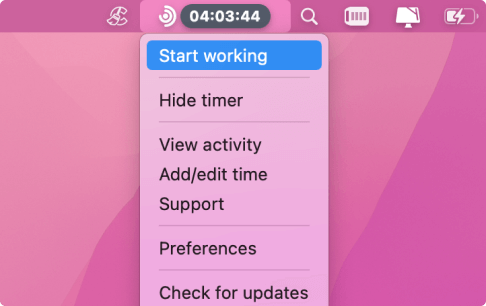Do you think it is justified to wait a long time to be appreciated for the work you put in throughout the year? Or, from an employer’s perspective, is it right to provide feedback through performance reviews at the year-end, when the employee won’t even recall the errors or performance gaps?
So, the question is—are performance reviews bad? 95% of managers are dissatisfied with their performance review system, and most experts believe that the traditional methods of evaluating an employee’s performance are quite old school. These outdated methods often create anxiety and disengagement, instead of motivating employees.
Then, what are the modern alternatives to performance reviews? In this article, we talk about:
- Why are traditional performance reviews outdated?
- How do modern alternatives work better?
- What are common challenges, and how can they be overcome?
- Why does modern performance management lead to better results?
Why Traditional Performance Reviews Are Outdated
Even though traditional performance reviews have been the standard for a long time, it is critical to acknowledge that the model is seriously outdated:
Infrequent Feedback
It is ineffective to evaluate performance once a year, as it fails to detect performance problems early and provide immediate solutions. Accenture, a global multinational company, abandoned its traditional annual employee performance reviews because it needed new approaches to survive the competition and differentiate itself.
One-Sided Conversations
When the performance reviews are conducted after a long period of time, they typically involve manager-dominated lectures that mostly focus on the shortcomings of the employee’s past months. This does not allow employees to share their side of the story.
A McKinsey report warns that performance reviews fail when they become one-way monologues. Instead, they should foster open dialogue where both sides are heard. When employees share context, voice concerns, and set future goals, the process becomes more constructive and motivating.
High-Stress and Bias Issues
According to research by Kahneman, people often rely on cognitive shortcuts—such as biases, beliefs, and past experiences—rather than fully analyzing the facts when making decisions.
Consciously or unconsciously implementing biases in performance reviews can deflate the overall performance of both employees and the company. Different types of reviews can lead to biased judgments by the managers. For example, leniency bias, first-impression bias, recency bias, or preferences based on likes and dislikes.
Employees may become frustrated, anxious, or demotivated if they feel that their performance was reviewed unfairly.
Lack of Actionable Takeaways
Traditional performance reviews focus too much on past behaviors rather than the improvements required for the future. Employees need continual monitoring and opportunities for growth, instead of an annual retrospective review.
Why Modern Alternatives Work Better
Modern work environments employ dynamic methods for performance reviews, and today, companies are making that shift with the following:
Continuous Feedback Systems
According to a 2023 Pew Research Center survey, only 34% of employees stated that they receive frequent feedback from their managers.
The goal of continuous feedback systems is to empower and promote regular feedback check-ins between managers and employees. They focus on providing real-time, constructive feedback to employees, both formally and informally. For instance, formal feedback is given on reports and employee project progress, while informal feedback includes small appreciation for employees’ efforts or creative methods, such as video messages to boost motivation. Leveraging an AI video editor tool can also make it easier for managers to share quick, personalized feedback in engaging formats.
Another useful approach is 360-degree feedback, where employees receive reviews from multiple sources, including managers and peers at the same level. It allows companies and employees to conduct reviews anytime, anywhere, and with anyone.
Spotify, for example, moved away from calendar-based performance systems and adopted a flexible, ongoing development approach centered around regular 1:1 conversations, employee-driven development talks, and supportive tools and training.
Goal-Oriented Performance Tracking
There is no one-size-fits-all approach to goal-oriented performance reviews. They focus on achievements rather than individual subjective ratings.
Among the most recent approaches to performance tracking is Objectives and Key Results (OKRs). This method emphasizes measurable metrics to assess team performance rather than evaluating individual employees. OKRs follow the “what-and-how” framework, where the “what” represents the objective and the “how” is determined through measurable milestones.
Here’s a sample OKR for a marketing team encouraging lead generation:

Tracking Key Performance Indicators (KPIs) over time can further enhance performance evaluation. Different types of KPIs serve various purposes, such as:
- Financial KPIs – Track net revenue, average salaries, and overall profitability.
- Customer-Focused KPIs – Measure customer satisfaction and retention.
- Process-Focused KPIs – Monitor operational efficiency and workflow effectiveness.
A notable example of KPI-based performance tracking is Uber’s rider-driver rating system. Uber, as a part of its review process, asks riders to rate their drivers and vice-versa. The company monitors this KPI to track drivers’ performance over time.
Activity-Based Performance Tracking with Traqq
Traditional performance reviews often miss the mark in gaining real-time visibility of employees’ work.
This is where Traqq thrives. It transforms reviews into meaningful insights without any invasive surveillance. Instead of relying on past memories or subjective matters, managers can see verified activity levels, app usage, and time spent on different tasks across various projects in real time. This lets the team evaluate performance based on actual work patterns and not assumptions.
Moreover, Traqq’s non-intrusive design does not require any screenshot capturing or keystroke logging—it just implements simple and ethical time tracking that helps employees and managers align on the same page.
Data collected through Traqq empowers people with clear and digestible analytics about their work. With its automated timesheets, productivity heatmaps, and detailed reports, businesses can do away with guesswork in performance assessment and establish a continuous feedback loop based on real activity.
Coaching and Mentorship Programs
When organizations prioritize continuous learning, they empower employees to grow, adapt, and contribute more effectively. According to an IBM study, 84% of employees in top companies are receiving the training they need—compared to just 16% in lower-performing organizations.
Coaching and mentorship programs in the work environment involve offering personalized training and continuous support to employees that help improve their skills, productivity, and overall professional development. Contrary to traditional training, this method uses real-time evaluations and practical learning to help people excel in their present and future endeavors.
A great example is Google’s employee-to-employee learning initiative, Googler-to-Googler (G2G), where employees mentor and teach one another, fostering a culture of knowledge-sharing and continuous development.
AI and Data-Driven Performance Tools
AI-powered solutions are revolutionizing performance management by providing a data-driven approach to evaluating employee performance. They bring unparalleled levels of accuracy, speed, and personalization with employee tracking solutions, interactive chatbots, and intelligent analytics platforms that not only automate repetitive processes but also eliminate bias, enabling managers to conduct performance reviews that actually motivate employees.
Common Challenges and How to Overcome Them
An organization’s success depends heavily on performance management, yet many businesses face struggles in adequately evaluating it. Here are the top three challenges faced by companies:
Overcoming Resistance to Change
Employee resistance refers to the basic human habit of rejecting or resisting changes in the workplace. These resistances can manifest in several forms such as lack of productivity, absenteeism, reluctance to learn new skills, fear of job loss, and a negative attitude towards organizational modifications.
Clearly outlining the advantages of a modern two-way regular feedback system and offering guidance and benefits for adapting to new developments can motivate employees to perform better.
Automating Time-Consuming Tasks
Traditional performance management is based on manual administration and subjective assessments of performance. Leveraging developments in generative AI and LLMs (Large language models), HR teams can automate everyday feedback processes, reducing administrative burdens while enhancing employee engagement.
Ensuring Fairness
Achieving fairness in performance reviews is challenging, as subjective biases can impact evaluations.
To ensure fairness, combine qualitative insights with objective performance metrics (such as KPIs). While KPIs provide measurable performance indicators, qualitative data evaluates non-quantifiable factors like creativity, leadership, and communication skills. These insights, based on observations, peer feedback, and social interactions, offer a more comprehensive understanding of an employee’s contributions.
Why Modern Performance Management Leads to Better Results
Modern performance management methods focus on employees and their potential. Rather than focusing on the past and criticizing events that happened a long time ago, modern performance evaluation techniques aim to enhance strengths and address inadequacies in day-to-day performance.
Growth-Focused Conversations
Effective performance management strategies focus on the organization’s future capabilities as well as employees’ career objectives and goals. Managers can have open conversations with employees about how their current strengths align with the company’s vision and where they need to improve. They can also talk about the specific skills employees desire to gain.
Employee Engagement and Motivation
Collaborative goal-setting and continuous two-way feedback help keep employees motivated and engaged while sustaining progress toward company goals. According to a study, 78% of employees are motivated to work more when rewarded.
Better Retention and Workplace Satisfaction
By encouraging constant feedback, precise goal-setting, and growth opportunities for employees, modern performance management strategies improve employee retention, motivation, and workplace satisfaction. Employees feel appreciated, engaged, and in line with the company’s objectives when they receive regular check-ins, real-time acknowledgment, and individualized growth opportunities.
Unlock Employee Potential – From Evaluation to Empowerment
Performance reviews are not about telling employees what they failed to achieve or what they are required to do. Rather, they should focus on encouraging growth, recognizing strengths, and supporting future development.
Therefore, companies should abandon the yearly performance review processes and make a shift to modern, frequent, and comprehensive peer-to-peer feedback and performance review methods. Moreover, adopting tools like robust KPI measurement metrics, OKR sheets, and time tracking software can encourage growth and improvements for both employees and the company.

